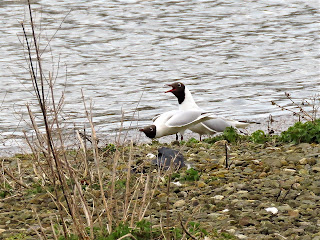A few images from Venus Pool Today.
A drake Shelduck with the swollen base to the bill. A bird that often nests in old rabbit holes some distance from water.
He is rather splendid.
And a duck Shelduck – no swelling at the base of the bill and often a small white mark there – as here.
Drakes get the attention because of their bright colours. The ducks are attractive in a more subtle way. A Mallard here.
A less-than-perfect drake Shoveler with some rather soggy-looking crown feathers.
And a duck Shoveler: the large bill is often held in the water as it filters its food: then the boldly-patterned flank feathers are the best ID feature.
And the pair.
The splendid male Pheasant has even more finery now. It has developed almost ‘Mickey Mouse’ ears.
See what I mean.
A species that is hard to approach. From a public hide at Venus Pool we see this Little Grebe now in summer plumage. Note the white (sometimes yellow) mark at the base of the bill.
One having a preen.
Another view.
Many people are surprised that the wader, thought of as a coastal species, nests in the Midlands. There are usually a pair at Venus Pool. The eggs are usually predated by the local crows despite the typically loud noise made by Oystercatchers.
You rarely need to see this distinctive flight plumage to ID an Oystercatcher as they invariably call in flight.
There were plenty of Snipe present and a whole gallery follows.
We see 6 Snipe here. The collective noun for Snipe is a ‘wisp of Snipe’, though that probably applies better to a group in flight.
Two enter the synchronised eating competition.
Another view.
Another group of 6.
A trio.
A double act.
And a singleton – just about got away with enlarging this.
This was behaviour I had not seen before. There were two Moorhens in the area and one bird turned its back on the other, tilted up to expose its white undertail and partially spread its wings.
Here looking around – to see where the other bird is? This way ...
... and that.
Most of our Black-headed Gulls have left to nest on inland lakes, mainly in Europe. Some do breed locally and very noisy gull colonies are. They have bred at VP and here we see two calling and displaying.
Because they are common it is easy to dismiss male Chaffinches. They are many subtle colours when seen well.
(Ed Wilson)


























